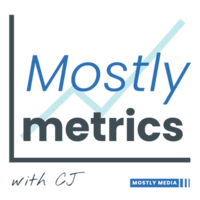
There have been countless books and articles written about PayPal—the “mafia,” the stars who came out of it, and the company’s relentless growth. But what’s never covered? How PayPal actually built its forecasting machine. Because at a payments giant handling over $2 trillion in annual transactions, forecasting isn’t just a finance function—it’s a survival skill.
At PayPal, forecasting wasn't just about predicting numbers—it was about understanding how money moves at scale. Erica Gessert, who ran FP&A at PayPal for eight years, shared a behind-the-scenes look at how the company approached budgeting and forecasting revenue as it scaled.
What makes PayPal unique is that it operates at the intersection of payments, technology, and macroeconomics. Unlike a traditional SaaS business with predictable subscription revenue, PayPal's financials are driven by transaction volume, consumer spending behavior, and economic cycles. This complexity forced the FP&A team to develop sophisticated models that could adapt in real time to changing market conditions.
In this piece, we’ll break down PayPal’s budgeting and forecasting playbook, focusing on three key areas:
The Foundation of Revenue Forecasting: How PayPal built models around Total Payment Volume (TPV) and why even the best predictive models had their limits.
Usage-Based Forecasting: How segmenting users based on behavioral drivers created a more accurate forecast.
The Impact of Seasonality & Calendar Days: How business days, holidays, and the infamous “five golden days” of Black Friday through Cyber Monday shaped financial projections.
PayPal’s experience offers valuable lessons for any finance leader managing growth, uncertainty, and the balance between top-down targets and bottom-up execution. It’s a masterclass in harnessing the chaos of a usage based model.
I. The Foundation: TPV (Total Payment Volume)
At the core of PayPal’s financial forecasting was Total Payment Volume (TPV)—the total dollar value of transactions flowing through the platform. Unlike a SaaS business where revenue is largely locked in through subscriptions, PayPal’s revenue was a direct function of consumer spending behavior, merchant adoption, and macroeconomic conditions.
When Erica Gessert first joined PayPal in 2015, the company relied on regression-based models that used historical TPV trends to predict future performance. Over time, however, PayPal built a more sophisticated forecasting engine, incorporating dozens of variables across:
Business segments (e.g., PayPal checkout, Venmo, Braintree)
Geographies (accounting for regional economic trends)
Currency exchange rates (which impacted international transactions)
Macroeconomic indicators (such as household income and consumer spending patterns)
At first, regression-based models worked fine in a steady-state environment. But as PayPal expanded across more geographies, currencies, and business lines, it became clear that a single-variable model couldn’t capture the complexity. Revenue swings in one region might be offset by growth in another, and macroeconomic factors like interest rates or currency fluctuations had a bigger impact than historical trends alone could predict.
To improve accuracy, PayPal developed a predictive model called “Galileo”, which used advanced algorithms to refine forecasts. But despite its sophistication, Galileo had a major flaw—it lacked “explainability.”
“Predictive models are great at forecasting, but terrible at explaining why. You need to know which part of the business is off—was it Asia, was it Europe? If you can’t answer that, your business partners will be frustrated.” – Erica Gessert
Ultimately, PayPal settled on a hybrid approach, using Galileo as a baseline but layering in human judgment and business context to adjust forecasts.

What You Can Learn
Even at a massive scale, PayPal’s experience proves that no model is perfect - even the super smart ones created in a lab. The best forecasting strategies combine data-driven predictions with human intuition, and they evolve based on macro trends, product shifts, and customer behavior. But at the end of the day, even the most sophisticated models need a simple, common-sense check—take a step back and ask,
Does this actually make sense given what we know about the business today?
III. Usage-Based Forecasting: How PayPal Predicts Transaction Behavior
Subscribe to our premium content to read the rest.
Become a paying subscriber to get access to this post and other subscriber-only content.
UpgradeYour subscription unlocks:
- In-depth “how to” playbooks trusted by the most successful CFOs in the world
- Exclusive access to our private company financial benchmarks
- Support a writer sharing +30,000 hours of on-the-job insights

